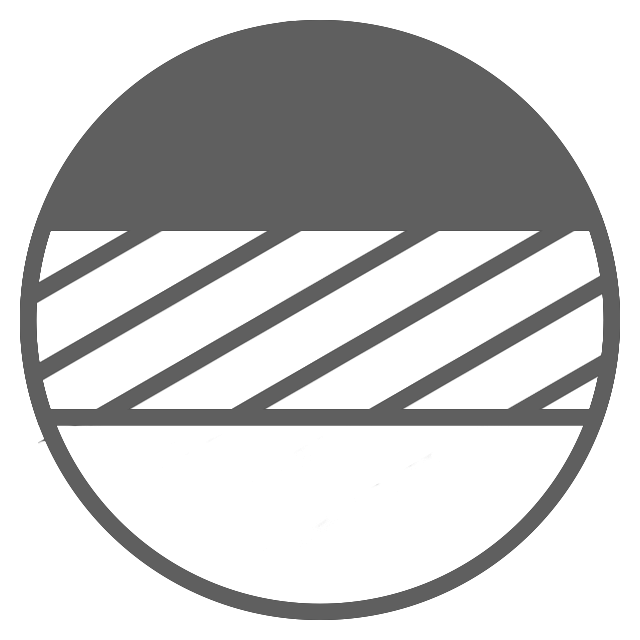Ceiling lamps do far more than throw light at a room. They set the tone, knit together colour and texture, and create rhythm from one space to the next. Choose the right fixture and you get a quiet upgrade that people feel before they notice.
The quiet impact of a ceiling lamp
A well chosen pendant or flush mount shapes how we experience a room. Height and spread matter; so does the character of the shade. Hard, glossy materials tend to produce intense pools of light. Natural fibres and softly textured shades calm the output and encourage slower, more convivial spaces.
Scale is just as important as style. Over a dining table, a wide shade draws the eye and defines the scene. In a hallway, a compact lantern keeps things airy while still adding personality. Once you start to look at the effect of material and form on light, bamboo ceiling lamps quickly stand out.
Why bamboo and iron make a refined pair
Bamboo brings warmth and tactility. Its pale golden tone suits minimal apartments as readily as rustic cottages, and its woven or folded textures add depth without visual clutter. Iron introduces contrast and structure. A simple black fitting or a discreet ring inside the shade anchors the design and promises longevity.
Together they read as balanced: organic fibre softening the light, metal holding everything true. The combination fits Japandi, coastal, boho and modern schemes with equal ease. It also works in traditional interiors, where the handcrafted quality of the bamboo plays off classic mouldings and natural timber.
Durability follows the same logic. Properly treated bamboo is strong for its weight and resilient in everyday household conditions; iron components are rigid, dependable and easy to maintain. Keep damp at bay and finishes intact, and the pairing ages gracefully.
A closer look at a hand‑folded bamboo ceiling lamp
One notable example is a bamboo ceiling lamp crafted in Vietnam. The shade is hand folded from natural bamboo, with clean iron accents that brace the structure and tidy the profile. It is designed for an E27 bulb up to 40 W, which makes LED retrofits straightforward, and arrives with a 2 m cable, a UK three‑pin plug, and a matching ceiling cap for neat mounting.
When lit, the shade emits a soft, ambient glow. That warmth comes from the fibre itself and from the way the folds diffuse and redirect light. The result is tranquil rather than stark, the kind of illumination that flatters both people and surfaces.
It is a lamp that wears its craft openly. Look closely and you see tiny variations in the fold pattern and colour, evidence of the maker’s hand. That irregularity is part of the charm, and it is what sets a handmade piece apart from a moulded plastic look‑alike.

Light quality and mood
Bamboo shades excel at diffusion. Thin slats and woven layers scatter the output, smoothing glare and shifting harsh points into a broad, gentle field. The material itself glows softly, much like a lantern, which tends to lower contrast in the room and make evenings feel calmer.
Patterns matter too. Pleats, weaves and latticework can cast delicate shadows on ceilings and walls, creating a lively but serene texture around the fixture. Pair the lamp with warm‑white bulbs around 2700 K and you get a golden tone that most people find relaxing. Over a dining table it encourages conversation; in a bedroom it signals rest.
Bulbs, controls and installation notes
Most bamboo pendants are happiest with modern LED lamps. An E27 LED at 6 to 8 W gives the brightness of a traditional 40 W bulb while staying cool, which is kinder to natural fibres. Look for CRI 90 or above for accurate colour, particularly over dining or work surfaces.
Dimming brings out the best in textured shades. If you plan to use a dimmer, choose dimmable LEDs and a compatible trailing‑edge dimmer module to avoid flicker. The Vietnamese hand‑folded example mentioned above is rated for E27 up to 40 W; stay within that specification, and if you need more brightness consider a second pendant rather than pushing the limit.
With any pendant, check the ceiling point and fixings. Iron hardware adds reassuring stability, but you still want a suitable anchor in the ceiling and enough slack in the cable for your ideal hanging height. The supplied 2 m lead allows generous drop; a ceiling cap keeps the finish tidy if you hardwire it, while the three‑pin plug offers flexible placement where a switched socket is available.
Styling ideas across interiors
Place a bamboo ceiling lamp above a timber dining table and it echoes the grain while softening the whole scene. Over a kitchen island, pair two medium pendants with matt black taps and you have a cohesive link between warm fibre and cool metal. In a bedroom, a single wide pendant at a modest height turns the bed into a focal point without adding bulk.
Colour palettes that flatter bamboo include creams, warm whites, sage, terracotta and denim blues. The light tone also pops against deep greens and slate greys, where the shade becomes a bright, tactile counterpoint. If your room leans modern, let the iron detail align with black picture frames or slimline door handles; if it leans rustic, let woven baskets, rattan chairs and linen carry the theme.
Care, maintenance and longevity
Handcrafted bamboo is robust in normal use, but it appreciates gentle care. Regular dusting with a soft cloth or brush keeps fibres clear and the weave crisp. For marks, a small amount of mild soap in water on a damp cloth does the trick. Avoid soaking the shade and dry it straight away.
Keep humidity moderate and direct sunlight limited. Persistent damp invites mould; strong UV dries and fades natural fibres. Inspect the iron parts periodically and, if they lose lustre, buff on a tiny amount of neutral wax or a suitable furniture polish to protect the finish.
After everyday guidance, a few targeted habits make a big difference:
- Cleaning rhythm: light dust weekly, deeper wipe quarterly
- Finish health: refresh oil or clear coat every year or two if the shade looks dry
- Hardware check: retighten fasteners and check the ceiling anchor each season

Why this craft stands out
The charm of a hand‑folded bamboo shade lies in the meeting of material and technique. Thin, flexible strips are bent and fixed by eye, creating pleats that catch the light and throw patterned shadows. Each piece is a little different. Iron components add the strength you cannot see, giving the shade a stable spine and clean lines.
There is a sustainability story worth valuing too. Bamboo grows quickly, needs few inputs, and returns to the earth at end of life. Hand processes use minimal energy compared with industrial moulding. When you pair that with iron that will last for decades, you get a fixture that is both beautiful and responsible.
Quick checklist before you order
Before you press buy, run through a short, practical check. It will help you avoid returns and make sure the lamp sings in your space.
- Ceiling height: confirm the drop suits your room and table clearance
- Bulb type: E27 fitting, 40 W max; plan an LED at the right colour temperature
- Dimming: ensure bulb and dimmer are compatible if you want control
- Fixings: check the ceiling anchor and whether you will hardwire or use the plug
- Shade size: match diameter to table or room scale for balanced proportions
- Finish: natural or sealed; decide whether you prefer a matte or satin sheen
- Care plan: dusting access, humidity levels and sunlight exposure
A note on everyday use
Once installed, you will notice how the lamp sets the pace of a room. Dinner feels more intimate, mornings softer, and late evenings calmer under a mellow, even glow. That quality of light is not a luxury; it is a daily comfort.
Opt for craftsmanship and materials that feel good to live with. In bamboo and iron you have a pairing that looks refined, works hard, and ages with integrity. If you want elegance without fuss, it is a smart place to start.





